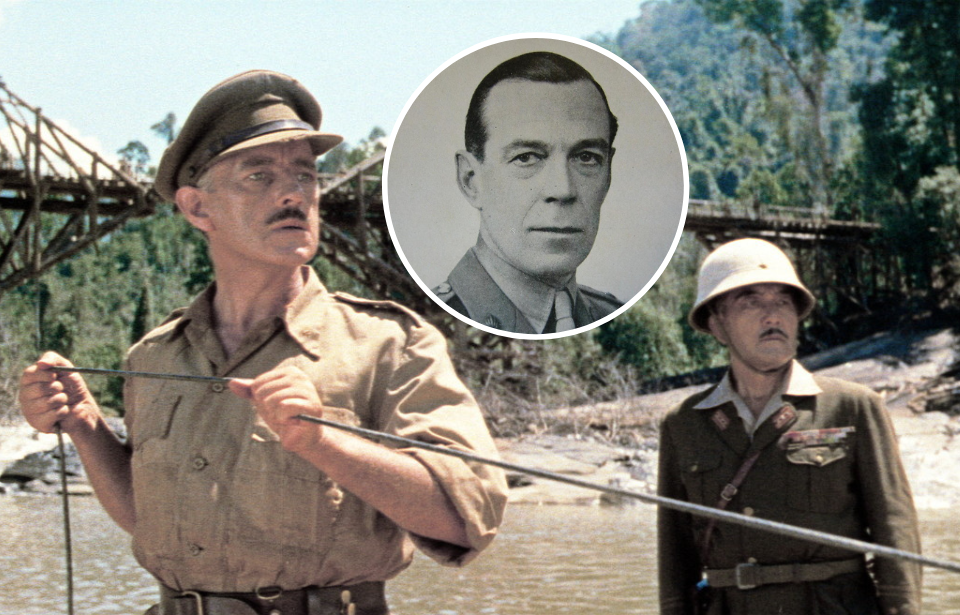The Bridge on the River Kwai (1957) was an acclaimed cinematic masterpiece that garnered numerous Academy Awards. Despite its widespread acclaim, many viewers are unaware of the substantial fictionalization present in the film, particularly concerning its portrayal of the central character, Lt. Col. Nicholson.
Although inspired by the genuine Lt. Col. Philip Toosey, the depiction of his actions at the prisoner of war (POW) camp diverges considerably from reality, painting him in a negative light – far from the truth. Toosey’s actual contributions earned him several accolades and the enduring respect of his men.
Philip Toosey’s father wouldn’t let him attend Cambridge
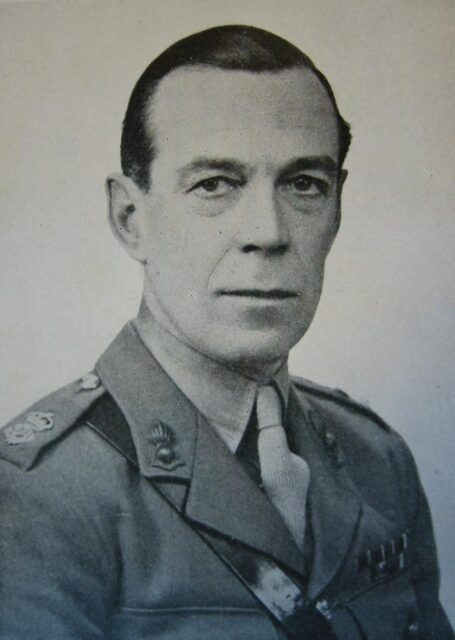
Philip Toosey was born in Oxton, Birkenhead as the eldest of seven children. His father, Charles, owned a successful shipping agency, while his mother, Caroline, was the daughter of the governor of Dublin Gaol.
Toosey received an education from his parents until he was nine years old, after which he attended school. He was a bright child and earned a scholarship to Cambridge. However, his father was opposed to him pursuing academia and forbade him from accepting the scholarship. Instead, he apprenticed under his Uncle Philip, who owned a firm of cotton merchants in Liverpool.
In 1927, Toosey was commissioned into the 59th (4th West Lancs) Medium Brigade, Royal Artillery of the Territorial Army, serving under Lt. Col. Alan C. Tod. His relationship with Tod served him well when his uncle’s firm went bankrupt in 1929, as Toosey joined the Baring Brothers merchant bankers, assisting his commander.
Toosey rose through the Territorial Army and was promoted to lieutenant in November 1931, and received additional promotions prior to the start of World War II. In 1940, the 59th was deployed to Belgium. Their time there was short, however, as he and the brigade were part of the evacuation of Dunkirk.
Upon his return to the United Kingdom, Toosey was promoted to lieutenant colonel and given command of the Royal Artillery’s 135th (Hertfordshire Yeomanry) Field Regiment.
Philip Toosey refused to leave his men behind in Singapore
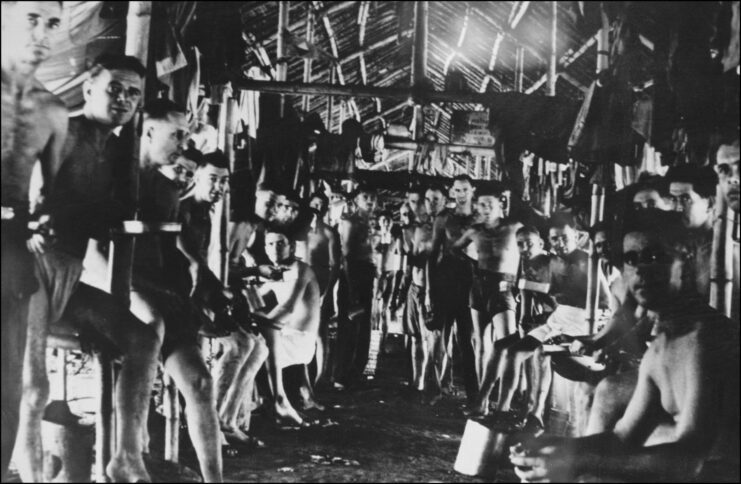
In 1941, Philip Toosey and his men were sent to Singapore and participated in one of the worst military defeats in British history. Given his reputable leadership, he was ordered to return to Britain with the evacuation that occurred in February 1942. However, he refused the order and stayed with his men, joining them in their captivity at the Tamarkan prisoner of war (POW) camp.
The POW camp was part of a project that sought to build several railroad bridges over the Khwae Noi; they were intended to link Thai and Burmese rail lines, to establish a more direct route between Bangkok and Rangoon, to support the Japanese occupation of Burma.
Building the bridges was no small task, and it proved to be extremely dangerous. About 100,000 conscripted Asian laborers and 12,000 POWs died working on the project, earning it the nickname, the “Death Railway.”
Attempts to sabotage construction
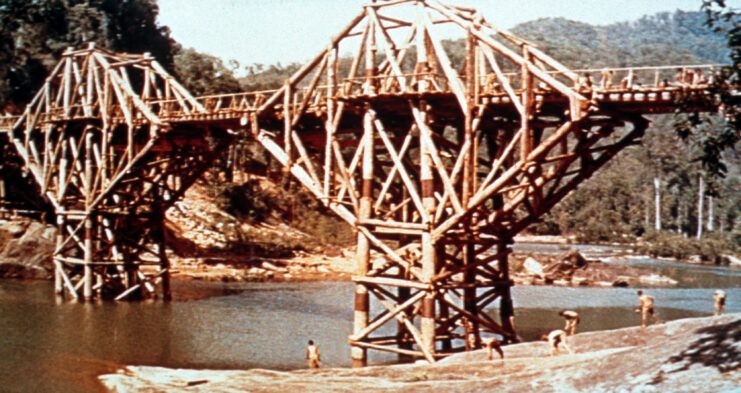
While imprisoned, Philip Toosey used his leadership skills to save the lives of as many of the 2,000 Allied prisoners at the camp. He organized a food and medicine smuggling operation with a Thai merchant, and disciplined the POWs to maintain cleanliness and hygiene. He insisted on a policy of unity and equality, breaking down the rank system by refusing to allow separate officers’ messes or accommodations. For his efforts, he earned the utmost respect from his men.
Along with his leadership, Toosey also tried to delay and sabotage the construction of the bridges. Collecting termites, he set them on the wooden structures, and would put things into the concrete mixtures, to prevent proper mixing. He also organized escapes from the camp, concealing disappearances and taking a beating once get aways were realized.
Unfortunately, Toosey’s efforts weren’t enough to prevent the completion of the bridges. The wooden and concrete bridges were finished in 1943, as was a third made from steel. Toward the end of the war, the wood and concrete bridges were both destroyed, and, in June 1945, the steel structure was bombed, but survived.
The Japanese considered Tamarkan to be the best-run POW camp, all thanks to Toosey. As such, they granted him quite a bit of autonomy. He was later transferred to an Allied officers’ camp, where he became a liaison officer with the Japanese.
Philip Toosey saved Sgt. Maj. Saito’s life
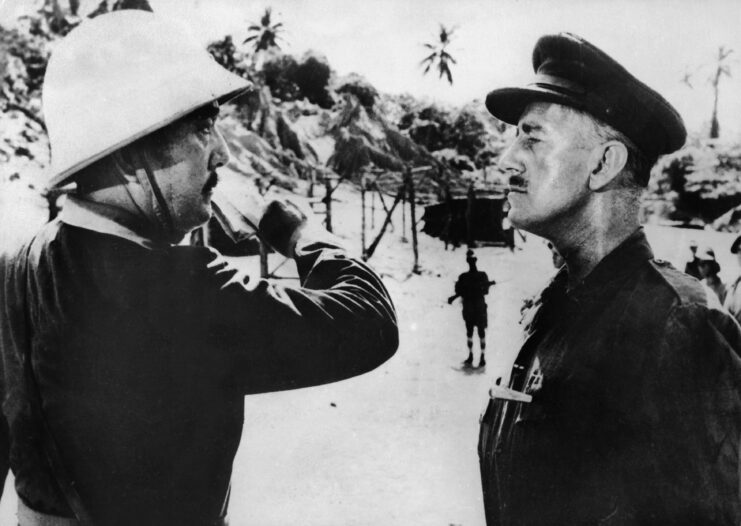
Before the conflict, Philip Toosey maintained a weight of approximately 175 pounds. However, after enduring captivity in the prisoner of war camp, his weight drastically plummeted to a mere 105 pounds, a shocking transformation. In characteristic fashion, he declined the opportunity to return home upon his liberation, opting instead to embark on a 300-mile journey to aid in the liberation of his comrades, despite his frail condition.
During the Japanese war crimes trials, Toosey played a pivotal role in ensuring the survival of Sgt. Maj. Saito, who held the second-in-command position at Tamarkan. Among the POWs, he was widely regarded as the most reasonable of all the officers.
Due to his softer treatment, Toosey spoke on Saito’s behalf, sparing him from facing trial and potential death or imprisonment. This act of advocacy created a profound mutual respect between them, leading to continued correspondence after the war’s end.
Controversy over The Bridge on the River Kwai (1957)
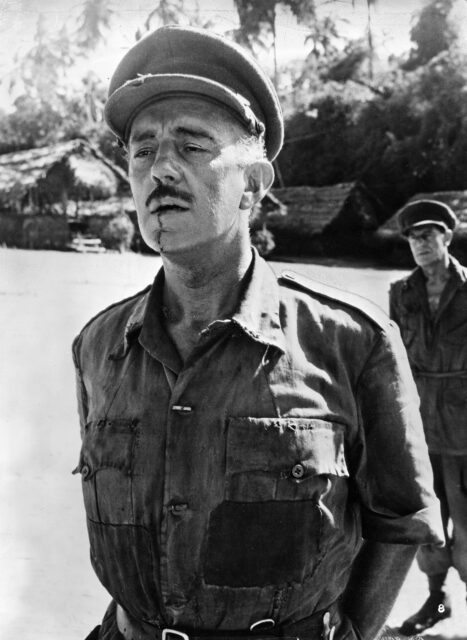
The events that occurred in Singapore and at the prisoner of war camp served as the inspiration for Pierre Boulle’s 1952 novel, The Bridge Over the River Kwai. The book was turned into an Oscar-winning film, The Bridge on the River Kwai, in which Alec Guinness plays Lt. Col. Nicholson, inspired by Toosey.
Unfortunately, the film and the novel took creative licensing with the real events, turning Toosey into someone who collaborated with the Japanese. This caused outrage among the former POWs who knew of his true involvement. When the film was released in 1957, many veterans pushed for him to speak out against the incorrect portrayal.
At first, Toosey refused to do so, but he was later convinced to write a letter to the Daily Telegraph, encouraging other veterans to identify the injustice of the film. However, it was The Bridge on the River Kwai‘s shaping of public perception that caused him to really do something about it. He agreed to an interview with Peter Davies, conducted over the course of several years. The only stipulation was that it couldn’t be published until after his death.
After retiring from the Territorial Army in 1954, Toosey was appointed a Commander of the Order of the British Empire and continued working with veterans. He died on December 22, 1975.
More from us: Harry Belafonte Narrowly Missed One of WWII’s Deadliest Disasters On US Soil
From the over 48 hours of footage Davies collected, he compiled a book, titled The Man Behind the Bridge, and put together a BBC Timewatch program documenting Toosey’s achievements in the war. The former soldier’s granddaughter, Julie Summers, also wrote a book outlining the true events that occurred in Thailand, titled The Colonel of Tamarkan.
